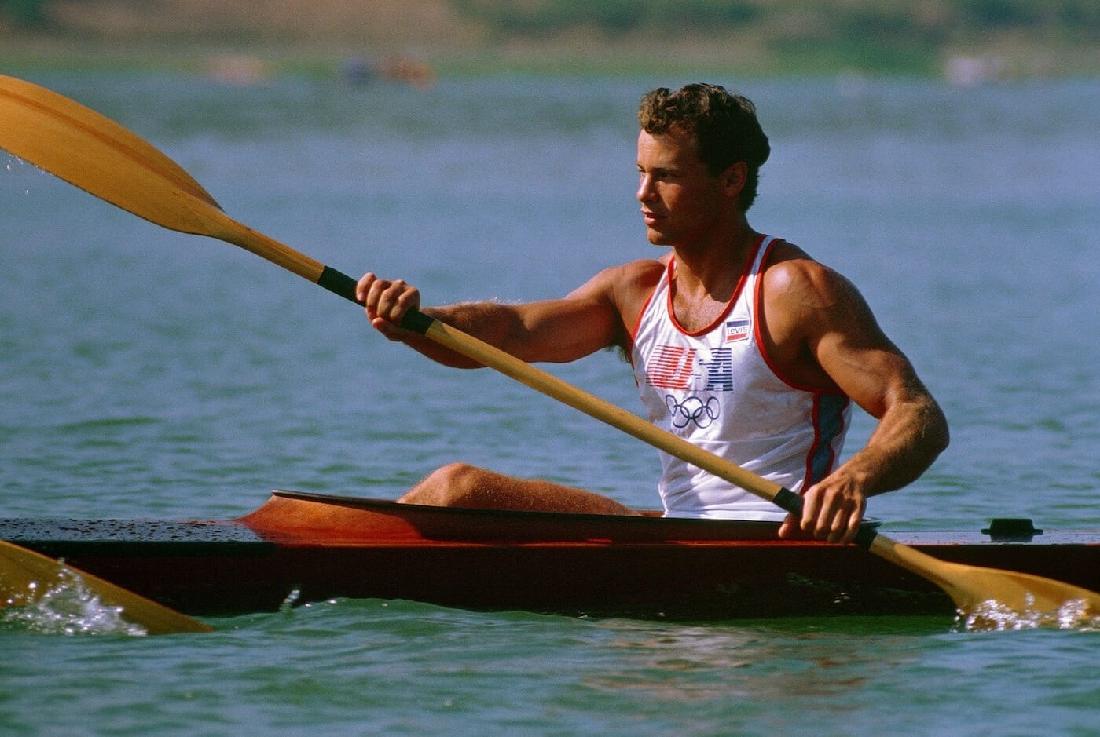If you’ve ever wondered about the benefits of kayaking and how much of a workout it actually gives you, you’re not alone.
Not only will it help you work up a good sweat, but kayaking regularly also comes with a number of benefits that you might not even be aware of. This article breaks down the key health aspects of kayaking including:
- Calories burned
- Muscles used
- Physical & mental benefits
Is Kayaking a good workout?
Yes, kayaking can definitely be a good workout. It’s comparable to other aerobic forms of exercise like running or biking.
Like any kind of exercise, though, the quality of the workout depends on how much effort you put into it.
If you jump on a stationary bike at your local gym and peddle at a snail’s pace while checking up on the latest social media buzz, you’re not going to have a very productive workout.
Likewise, if you jump in a kayak and take a leisurely paddle broken up by lots of extended breaks, it’s not going to be the same as actively paddling and getting your heart rate up.
Calories burned per hour of kayaking
Kayaking is in the same ballpark as other forms of exercise in terms of burning calories. Going for an hour-long paddle will burn 396 calories for a 175-pound person, according to the American Council on Exercise. More if you’re heavier than 175 pounds.
How many hours of kayaking to burn a pound of fat?
Considering there are about 3500 calories in one pound of fat, it would take about 8 hours and 45 minutes to burn off a pound of fat. Not bad for a day on the water.
How does kayaking compare to other activities?
If you’re wondering how kayaking stacks up to other types of exercise, here’s a comparison of some of the most common forms of exercise.
| Activity | Calories Burned per Hour |
| Kayaking | 396 |
| Cycling (5.5mph) | 317 |
| Cycling (12-13mph) | 635 |
| Running (5mph) | 635 |
| Swimming (casual) | 555 |
| Weight training (normal) | 238 |
| Weight Training (intense) | 476 |
Kayaking is easy on your joints
Unlike high-impact activities — like running, which can dish out a pounding on your joints — kayaking is a form of low-impact exercise. It can be a good exercise outlet for people with bad hips or knees, or for people looking to get ahead of the curve and avoid damage to their joints in the first place.
Some people confuse low-impact with low-intensity but nothing could be further from the truth. Low impact doesn’t mean low intensity. The intensity of a workout is all about the effort you put into it. If you put the effort in, you’ll get something out of it.

Muscles used when kayaking
Any form of exercise emphasizes different muscle groups. Kayaking primarily works your upper body and core if you’re using the proper paddling technique but also targets some muscle groups you might not expect. Here are some of the major muscle groups used while kayaking:
Back
- Lats
- Rhomboids
Core
- Abdomen
- Obliques
- Lower back
Chest
- Pectoral
Arms/Shoulders
- Biceps
- Triceps
- Deltoid (rear, lateral, and anterior)
- Forearms
Believe it or not, you also engage your legs a fair bit while kayaking.
When using the proper paddling technique, you end up pushing with your legs and using them to brace against the inside of the kayak. This gives you a solid foundation from which to paddle and gives you a bit of a leg workout as well.
Physical Health Benefits of Kayaking
- Weight loss – This one is a bit obvious but is still worth mentioning. Exercise like kayaking combined with an appropriate calorie intake can help you drop pounds.
- Muscle toning and building – Kayaking works a number of different upper body and core muscles, which can help tone and strengthen them.
- More energy – According to the New York Times, moderate-intensity exercise (like kayaking) performed 3 times a week can reduce fatigue and improve energy levels by 20%.
- Improves cardiovascular health – Active paddling while kayaking gets your heart rate, which boosts your cardiovascular health.
- Better sex life – Not only can regular exercise improve sexual performance, but it can also increase the pleasure and frequency of sexual activity. How’s that for motivation?
- Source of vitamin D – It’s estimated that 45%-75% of people are deficient in vitamin D because it’s not very plentiful in the foods we eat. Good thing our bodies can produce it using sunlight, which is usually plentiful when you’re out on the water.
Mental Health Benefits of Kayaking
- Stress reduction – Hitting the water and getting your heart rate up can help you reduce stress levels. Many paddlers find that just being out on the water helps them destress.
- Feel happier – Exercise has been shown to improve your mood and can even help fight depression through the release of endorphins.
- Improved focus – The boost of dopamine, norepinephrine, and serotonin that your brain gets from exercise all help to improve focus and attention.
- Improved memory – Being active causes the release of chemicals within our bodies that improve the health and production of brain cells.
- Improves sleep quality – Exercise helps to tire you out and reduces your stress level, which can help you fall asleep if you have trouble drifting off at night.
- Social bonding – This one only works if you hit the water with some paddle buddies. And why wouldn’t you? First of all, it’s safer. Second of all, sharing a fun experience with another person literally makes it even more fun and can help you improve your relationships.
- Boosts self-confidence – Overcoming challenges and learning new skills can help improve your self-image and boost your confidence.
Wrapping Up
Now that you’re up to date on all the amazing health benefits that come with kayaking, it’s time to get out there and experience them for yourself. Good health and happy paddling.

